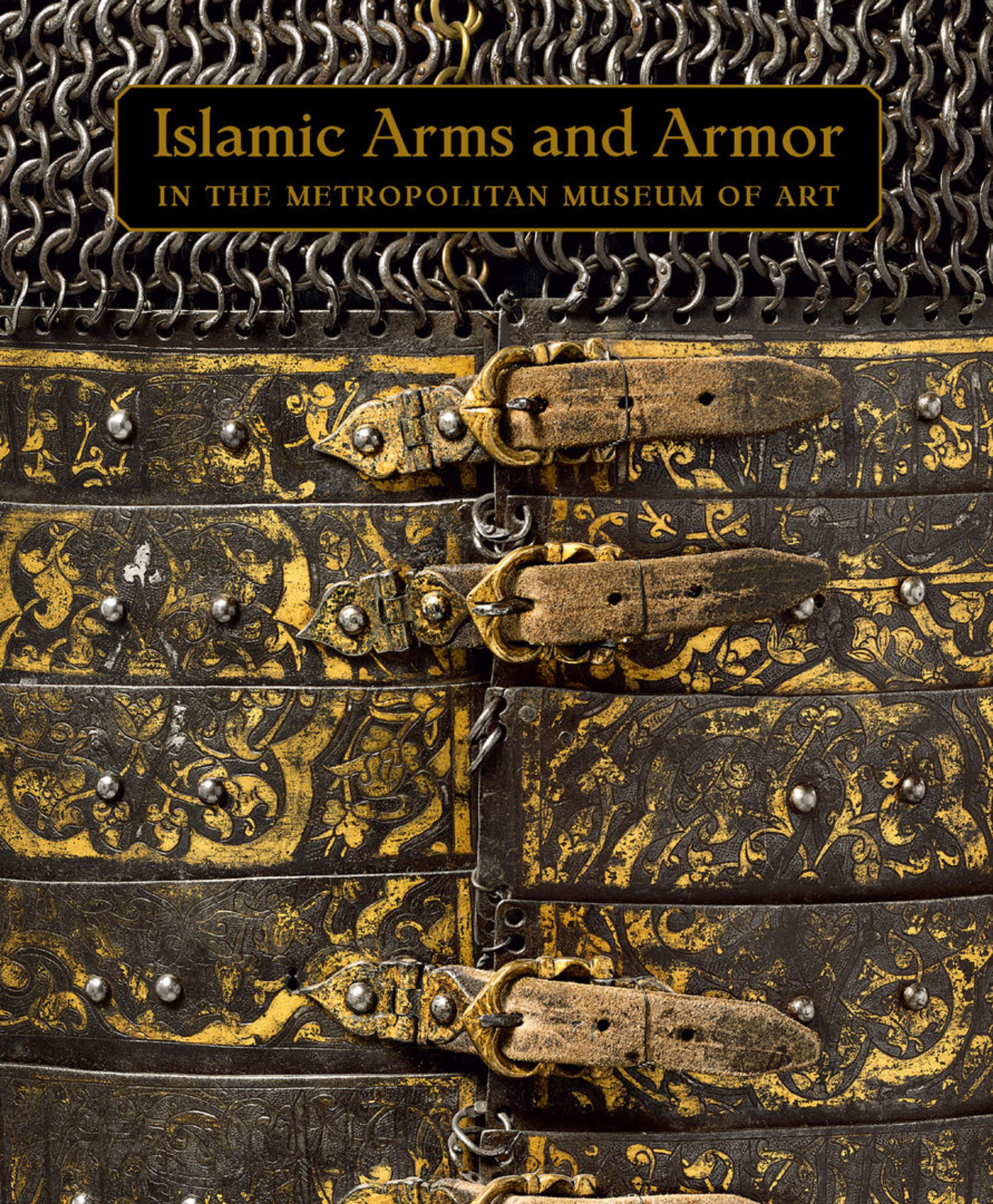Shield with Hunting and Landscape Vignettes
The Mughal aesthetics are reflected in its weaponry. This shield, which belongs to the first quarter of eighteenth century, is ornately decorated with inlaid gold decoration on its rim and knob. The subject depicted on the border of the rim shows the ruler who is accompanied by his attendants’ aims with his rifle, gallops on a horse with a lance in his hand or attacks a furious lion. The hunting scene depicts dynamic movement with dogs and tiger jumping on their prey and an aggressive elephant trampling with a broken chain in its rear foot. The outer border contains stylized floral and leaf motifs characteristic of the period of Mughal Emperor Aurengzeb Alamgir. The central knob of the shield bears an intricately engraved landscape with architecture and rock formation. The profuse ornamentation of this shield suggests that it was likely a royal object.
Artwork Details
- Title: Shield with Hunting and Landscape Vignettes
- Date: second half 17th century
- Geography: Attributed to India
- Medium: Steel; with gold overlay
- Dimensions: Diam. 21 11/16 in. (57.7 cm)
- Classification: Arms and Armor
- Credit Line: Fletcher Fund, 1976
- Object Number: 1976.176.3
- Curatorial Department: Islamic Art
More Artwork
Research Resources
The Met provides unparalleled resources for research and welcomes an international community of students and scholars. The Met's Open Access API is where creators and researchers can connect to the The Met collection. Open Access data and public domain images are available for unrestricted commercial and noncommercial use without permission or fee.
To request images under copyright and other restrictions, please use this Image Request form.
Feedback
We continue to research and examine historical and cultural context for objects in The Met collection. If you have comments or questions about this object record, please contact us using the form below. The Museum looks forward to receiving your comments.
